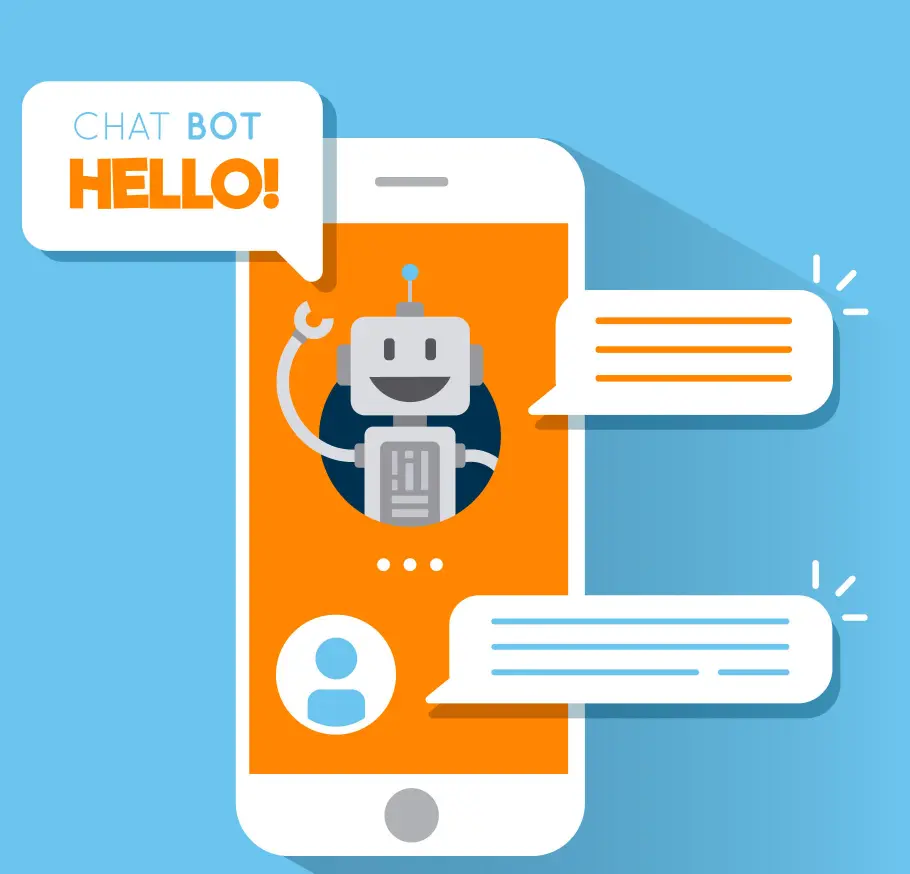In the rapidly evolving digital landscape, businesses continuously seek innovative ways to enhance user experience and streamline operations. One such advancement that has gained significant traction is the integration of chatbots into web design. These AI-powered virtual assistants have become a stable part of modern web design due to their ability to improve customer service, increase engagement, and drive conversions. This article explores the reasons why chatbots have become an indispensable component of web design and how businesses can effectively leverage them.
The Evolution of Chatbots
Chatbots have come a long way since their inception. Initially, they were basic programs designed to simulate human conversation through scripted responses. However, advancements in artificial intelligence (AI) and natural language processing (NLP) have transformed chatbots into sophisticated tools capable of understanding and responding to complex queries in a human-like manner.
Modern chatbots can be broadly categorized into two types:
Rule-Based Chatbots: These operate on predefined scripts and are suitable for handling simple and repetitive tasks. They follow a set of rules to provide responses based on user inputs.
AI-Powered Chatbots: These utilize machine learning and NLP to understand the context and intent behind user queries. They can learn from interactions, improve over time, and handle more complex tasks.
The evolution of chatbots has made them more versatile and capable, leading to their widespread adoption across various industries.
Enhancing Customer Service
One of the primary reasons chatbots have become integral to web design is their ability to enhance customer service. In today’s fast-paced digital world, users expect quick and efficient responses to their queries. Chatbots excel in providing instant support, addressing common questions, and resolving issues without the need for human intervention.
24/7 Availability
Chatbots offer round-the-clock support, ensuring that users can receive assistance at any time, regardless of business hours. This availability is particularly valuable for global businesses catering to customers in different time zones. By providing immediate responses, chatbots help improve customer satisfaction and reduce wait times.
Handling High Volumes of Queries
Businesses often experience peak times when the volume of customer queries can overwhelm support staff. Chatbots can handle multiple interactions simultaneously, ensuring that no customer query goes unanswered. This capability helps manage high volumes of queries efficiently and reduces the burden on human support agents.
Consistent and Accurate Responses
Chatbots provide consistent and accurate responses to frequently asked questions. They can retrieve information from databases and knowledge bases to deliver precise answers. This consistency helps build trust with users and ensures that they receive reliable information every time they interact with the chatbot.
Increasing User Engagement
Engaging users effectively is crucial for businesses to retain customers and drive conversions. Chatbots play a significant role in increasing user engagement by providing personalized experiences and proactive assistance.
Personalized Interactions
AI-powered chatbots can analyze user data and behavior to deliver personalized interactions. By understanding user preferences and past interactions, chatbots can recommend products, services, or content tailored to individual needs. Personalized experiences enhance user satisfaction and encourage repeat visits.
Proactive Assistance
Chatbots can initiate conversations with users based on their behavior on the website. For example, if a user spends a significant amount of time on a particular product page, the chatbot can offer assistance, provide additional information, or suggest related products. Proactive engagement helps guide users through their journey and increases the likelihood of conversions.
Interactive and Conversational UI
Chatbots provide an interactive and conversational user interface (UI) that can make browsing more enjoyable. Users can ask questions, seek recommendations, and get assistance in a conversational manner, similar to interacting with a human. This interactive experience keeps users engaged and encourages them to explore more.
Streamlining Business Operations
Beyond customer service and engagement, chatbots can streamline various business operations, making them an essential component of web design.
Automating Repetitive Tasks
Chatbots can automate repetitive and time-consuming tasks, freeing up human resources for more complex activities. For example, chatbots can handle appointment scheduling, order tracking, and basic troubleshooting, allowing employees to focus on tasks that require human expertise.
Data Collection and Analysis
Chatbots can collect valuable data from user interactions, providing insights into customer preferences, pain points, and behavior. This data can be analyzed to identify trends, optimize marketing strategies, and improve products or services. The ability to gather and analyze data in real-time helps businesses make informed decisions and stay competitive.
Cost-Effective Solution
Implementing chatbots can be a cost-effective solution for businesses. By automating customer support and operational tasks, businesses can reduce the need for a large support team, leading to cost savings. Additionally, chatbots can handle queries and tasks efficiently, reducing the likelihood of errors and improving overall productivity.
Improving Conversion Rates
Chatbots can significantly impact conversion rates by guiding users through the sales funnel, addressing concerns, and providing relevant information at critical stages.
Lead Generation and Qualification
Chatbots can engage visitors as soon as they land on the website, capturing leads by collecting contact information and qualifying potential customers. By asking relevant questions, chatbots can determine the user’s needs and direct qualified leads to the sales team for follow-up.
Reducing Cart Abandonment
E-commerce businesses often face the challenge of cart abandonment, where users add items to their cart but leave the site without completing the purchase. Chatbots can intervene by offering assistance, answering questions about products, and providing incentives such as discounts or free shipping to encourage users to complete their purchase.
Providing Instant Support
During the purchasing process, users may have questions or concerns that, if left unaddressed, could lead to abandonment. Chatbots can provide instant support, resolving issues and reassuring users, thereby increasing the likelihood of completing the transaction.
Enhancing Brand Loyalty and Customer Retention
Building brand loyalty and retaining customers is essential for long-term business success. Chatbots contribute to these goals by providing exceptional customer experiences and fostering ongoing engagement.
Building Trust Through Consistency
Consistent and accurate responses from chatbots help build trust with users. When customers know they can rely on the chatbot for accurate information and timely assistance, they are more likely to return to the website and engage with the brand.
Loyalty Programs and Rewards
Chatbots can assist in managing loyalty programs by informing users about available rewards, tracking points, and suggesting ways to earn more points. This proactive approach encourages customers to participate in loyalty programs and strengthens their connection to the brand.
Post-Purchase Support
Chatbots can continue to engage customers even after a purchase is made. They can provide order updates, handle returns and exchanges, and gather feedback on the purchase experience. Ongoing support and engagement help create a positive post-purchase experience, increasing the likelihood of repeat business.
Implementing Chatbots Effectively
To fully realize the benefits of chatbots, businesses need to implement them effectively. Here are some best practices for integrating chatbots into web design:
- Define Clear Objectives
Before implementing a chatbot, businesses should define clear objectives. Determine the specific tasks the chatbot will handle, such as customer support, lead generation, or sales assistance. Clear objectives help in designing a chatbot that meets business goals and user expectations.
- Choose the Right Platform
Selecting the right chatbot platform is crucial for success. Consider factors such as ease of integration, customization options, AI capabilities, and scalability. Popular platforms like Dialogflow, Microsoft Bot Framework, and Chatfuel offer robust features for building and deploying chatbots.
- Design a User-Friendly Interface
A user-friendly interface is essential for a positive chatbot experience. Ensure that the chatbot is easy to interact with, using simple language and clear instructions. Provide quick reply options and ensure that the chatbot can handle both text and voice inputs if applicable.
- Continuously Train and Improve
AI-powered chatbots require continuous training and improvement. Monitor chatbot interactions, gather feedback, and analyze performance metrics to identify areas for enhancement. Regular updates and improvements ensure that the chatbot remains effective and relevant.
- Ensure Data Privacy and Security
With the increasing focus on data privacy, businesses must ensure that their chatbots comply with data protection regulations. Implement robust security measures to protect user data and be transparent about data usage and storage practices.
- Integrate with Existing Systems
For a seamless user experience, integrate the chatbot with existing systems such as customer relationship management (CRM) software, e-commerce platforms, and marketing automation tools. Integration ensures that the chatbot can access relevant data and provide personalized responses.
In conclusion chatbots have become a stable and essential component of modern web design, offering numerous benefits to businesses and users alike. Their ability to enhance customer service, increase engagement, streamline operations, improve conversion rates, and foster brand loyalty makes them indispensable in today’s digital landscape. By implementing chatbots effectively and continuously optimizing their performance, businesses can stay competitive, meet user expectations, and achieve long-term success. As technology continues to evolve, the role of chatbots in web design will only grow, making it crucial for businesses to embrace this innovative tool.








